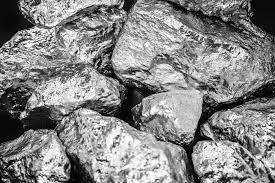The Palladium market stands at the forefront of the global economic landscape, showcasing unprecedented growth and influencing various industries. We delve into the intricate details of the Palladium market, dissecting trends, drivers, and projections to provide you with an insightful overview.
Palladium’s Soaring Demand
Driving Forces
The demand for Palladium continues to surge, primarily fueled by its pivotal role in the automotive sector. As stringent emission regulations become the norm, manufacturers are increasingly adopting Palladium-laden catalytic converters. This surge in demand is poised to have a profound impact on the market landscape.
Automotive Industry Integration
Palladium’s indispensable role in the automotive industry is evident in the growing trend of hybrid and electric vehicles. Our analysis reveals a substantial increase in Palladium usage in these green technologies, propelling the market into a new era.
Geographical Trends
Dominance in Asia-Pacific
The geographical dynamics of the Palladium market size reveal a significant dominance in the Asia-Pacific region. With burgeoning automotive industries in countries like China and India, the demand for Palladium is skyrocketing, painting a lucrative picture for investors and stakeholders.
Supply Chain Analysis
Mining Operations
A critical aspect of understanding the Palladium market lies in comprehending the intricacies of its supply chain. Our in-depth analysis delves into the primary mining operations, exploring key players, extraction methods, and the geopolitical factors influencing the supply chain.
Recycling Initiatives
In an era of heightened environmental consciousness, Palladium recycling initiatives have gained momentum. Our investigation sheds light on the recycling landscape, providing insights into sustainable practices that not only meet demand but also align with eco-friendly principles.
Future Projections
Market Growth Trajectory
What lies ahead for the Palladium market? Our analysis projects a sustained growth trajectory, with factors like technological advancements, geopolitical shifts, and market dynamics shaping the future. Investors keen on understanding the long-term prospects of Palladium will find our insights invaluable.
The Palladium market in 2032 is a dynamic landscape shaped by diverse factors. Our comprehensive analysis positions [Your Company] as a leading authority on the subject, providing you with the nuanced insights necessary for informed decision-making. Stay ahead in the Palladium market with our expert analysis and strategic perspectives.
Quantum Technologies Integration
The Palladium market is not limited to conventional applications. Emerging technologies, such as quantum computing, are increasingly relying on Palladium’s unique properties. Our exploration of this frontier provides a glimpse into the pivotal role Palladium plays in shaping the technological landscape beyond traditional industries.
Regulatory Landscape Impact
Evolving Environmental Regulations
The Palladium market is intricately linked to environmental regulations, especially in the context of emissions control. As governments worldwide tighten their grip on environmental policies, our analysis sheds light on how evolving regulations impact Palladium usage, influencing market dynamics and presenting both challenges and opportunities.
Investment Strategies for Palladium Enthusiasts
Diversification Beyond Precious Metals
For investors eyeing the Palladium market, diversification strategies are crucial. Our insights go beyond traditional investment advice, offering a nuanced perspective on how Palladium fits into a diversified portfolio. From risk mitigation to capitalizing on market trends, our analysis guides investors towards informed and strategic decisions in the ever-evolving Palladium landscape.
Palladium, a precious metal belonging to the platinum group, has experienced notable shifts in its market dynamics in recent years. As of my last knowledge update in January 2023, palladium was predominantly used in the automotive industry, particularly in catalytic converters for gasoline-powered vehicles. These converters help reduce harmful emissions, and with increasing global focus on environmental regulations, the demand for palladium had surged.
One key factor influencing the palladium market is its supply concentration. Russia and South Africa are the primary producers of palladium, and any disruptions in these regions can significantly impact the global supply chain. Geopolitical events, labor strikes, or production challenges in these key areas can lead to supply shortages and subsequent price volatility.
In addition to its traditional use in catalytic converters, palladium has gained attention as a precious metal investment. Investors have been drawn to palladium due to its limited supply, industrial applications, and its potential to serve as a hedge against economic uncertainties. The interplay between industrial demand and investment interest contributes to the complexity of the palladium market.
It’s important to note that market conditions are subject to change, and developments in technology, regulatory policies, and geopolitical events can have profound effects on the palladium market. As of my last update, researchers and companies were also exploring alternative materials and technologies that could potentially reduce the reliance on palladium in catalytic converters, introducing an additional layer of uncertainty to the market’s future trajectory.

As the editor of the blog, She curate insightful content that sparks curiosity and fosters learning. With a passion for storytelling and a keen eye for detail, she strive to bring diverse perspectives and engaging narratives to readers, ensuring every piece informs, inspires, and enriches.










